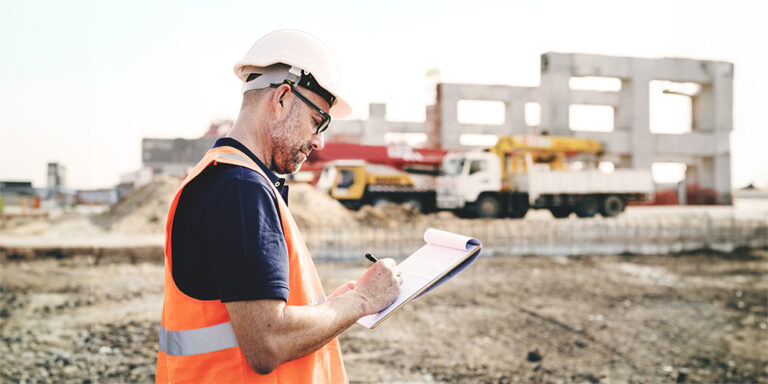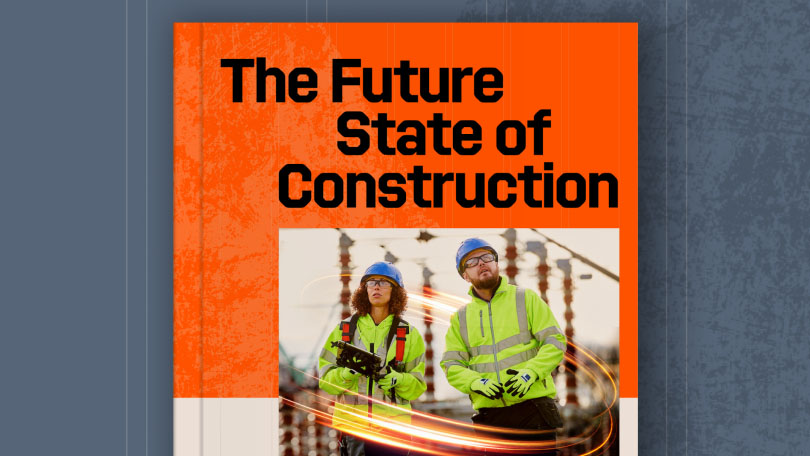— 6 min read
Meeting Industry Standards: Strategies for Enhancing Construction Quality

Last Updated Aug 28, 2025
Last Updated Aug 28, 2025

Like safety, quality is one of the pillars of construction where sacrifices should never be made. In fact, sacrificing quality can ultimately become a safety issue — the two are intrinsically linked. Building to high standards of quality should be every construction company’s goal, and the entire construction lifecycle needs to be designed and planned in a way that prioritises this.
Any issues with quality can snowball into much bigger problems than an initial defect. Quality issues can damage reputations, lead to a company losing a loyal client and they can cause a team to take on additional costs of rework and remediation, to name just a few consequences.
There are industry standards — such as BS 99001 - Quality Management Systems Standard for the Built Environment — which companies can undertake assessments for, to help them demonstrate their commitment to quality. Such certifications are voluntary and serve as extra validation that a company follows strict processes, on top of the regulatory requirements like the Construction (Design and Management) 2015.
Table of contents
The Domino Effect: Cost Sensitivities in Construction Quality
The interplay between cost and quality has a significant impact on the result of a construction project. It can be tempting to change a design or use different materials to save money, but this doesn’t always go to plan. Often, it causes the quality to suffer, as it can mean teams are cutting corners or choosing materials that are of lower quality and, thus, cheaper.
While cost savings can seem promising, there are many situations where they don’t go to plan. If you don’t think through the implications of changing a design or materials, you can miss vital details which then cause a domino effect of challenges for the site and the quality.
I worked on a project where I had prepared a masonry support and a concrete frame with channels that meant you didn’t need to drill anything. I was told to use a different system that would be £100,000 cheaper — but also meant we couldn’t use the stuff I had prepared. In the end, the extra drilling caused additional quality problems and coordination issues, and we didn’t save anything at all.

Sebastian Czajka
Project Director
Vision Success
Last-minute substitutions are rarely a good idea. They often create a chain reaction of on-site complications, requiring project managers to revise schedules and they can even cause rework down the line.
Creating a ‘Quality Culture’ in Construction
Rather than scrambling to check that the build quality is up to scratch at the end of the project, it’s much more effective to have a ‘built-in’ approach to quality. Creating a quality culture, where you embed quality practices into every stage of construction, is a better way to operate.
It’s not about patching at the end; it’s every day, checking if each step is done right, so we don’t close out the building process leaving mistakes.

Sebastian Czajka
Project Director
Vision Success
There are lots of methods for integrating quality control into the entire project lifecycle, such as using quality checklists, taking photos for evidence at every stage and implementing robust sign-off protocols. But as well as processes, there is a big people element to quality. Leadership and team culture have a vital role to play.
How Leadership and Team Culture Affect Construction Quality
Leadership style makes a big difference to the way that a construction team feels about and approaches quality. Some leaders create a blame culture, holding individuals to account for any mistakes that impact quality. This is not an effective approach. Instead of setting high standards and building motivation to achieve them, it creates fear and resentment within the team.
Leaders should instead see quality issues as learning opportunities, and key moments where they can educate their teams. Consistent leadership, respect and clear instructions have a far better influence on quality outcomes than being harsh or punitive.
If there’s a mistake, we don’t say ‘it’s your fault.’ We figure out how to fix it, learn, and keep everyone motivated.

Sebastian Czajka
Project Director
Vision Success
Holding weekly meetings, where leadership teams encourage all staff to ask lots of questions without fear of judgement or ridicule, helps to create the environment for curiosity instead of blame. Balancing technical and soft skills helps to nurture the right atmosphere to both encourage high standards that lead to high quality and a culture of learning and growth, without expecting perfection.
I learned to manage people, time and problem-solving and now I pay it forward through briefings, webinar sessions and on-site coaching.

Sebastian Czajka
Project Director
Vision Success
Emerging Trends: Modern Methods of Construction and Quality
Modern methods of construction (MMC) such as offsite fabrication and modular construction are newer construction techniques that have had a significant impact on construction quality. Offsite fabrication is a method construction teams use to assemble or manufacture elements of a project away from the building site. Modular construction also involves off-site fabrication, and is a technique where a prefabricated structure is built in sections or ‘modules’ that construction workers can fit together on site.
Both of these methods involve building parts of a structure in a controlled factory environment, which makes it much easier to control the quality. The production-line style of working means that it’s easier to build with more precision, unlike building on site where all sorts of unexpected disruptions can occur.
There are clear quality control discrepancies between the factory and the site. Everything is very precise off site, thanks to the controlled environment. On site, it doesn’t work like this.

Sebastian Czajka
Project Director
Vision Success
Despite the positive impact on construction quality, there are challenges with MMC, and it’s not as widely adopted as it could be. One of the challenges is that designs need to be frozen before construction starts. Unfortunately, this is very rare, as the full design is not ready yet.
Before you go ahead with offsite manufacturing you need to agree ‘Yes, this is the final design’. I haven’t done even one development in 20 years where that happened.

Sebastian Czajka
Project Director
Vision Success
It’s also costly, and teams need to spend a higher proportion of the budget at the beginning of the project because of the costs associated with the factory space. Many construction companies are used to the old way of doing things and aren’t ready to make this change to ways of working.
Key Takeaways on Construction Quality
Ultimately, through strategically adhering to standards, planning thoughtfully and creating a proactive quality culture, construction teams can maintain the high levels of quality that clients expect. Leading by example and encouraging desired behaviours has a much better effect than punishing ‘bad’ behaviours.
Construction quality will always be one of the highest priorities for a build. No matter how construction methods and technology continue to change, there will always be the need to monitor and safeguard quality. As the regulatory landscape evolves, and new standards and regulations enter the site, quality will only become more important.
Categories:
Written by

Explore more helpful resources

Control the Chaos: Standardising Document Workflows in Construction Projects
Document control and implementation play a central role in managing risk, meeting deadlines, and delivering projects to spec. As builds become more complex and teams increasingly disperse, the volume and...

Cost-Plus Construction Contracts in the UK
A construction cost-plus contract – sometimes called a cost-reimbursable or prime cost contract – reimburses all project costs and adds a fee to cover the contractor’s overhead and profit. UK...

Digital Construction Technology for Whole-Life Value
For decades, the construction industry has kept a narrow focus on capital cost — the one-time, upfront costs of a construction project. While in the short term this seems like...

UK Construction Progress Reports: Tools for Smarter Site Management
Construction progress reports track completed work, on site issues, costs, and safety so UK project teams can demonstrate progress, secure payments, and stay on programme. Accurate progress data is essential...
